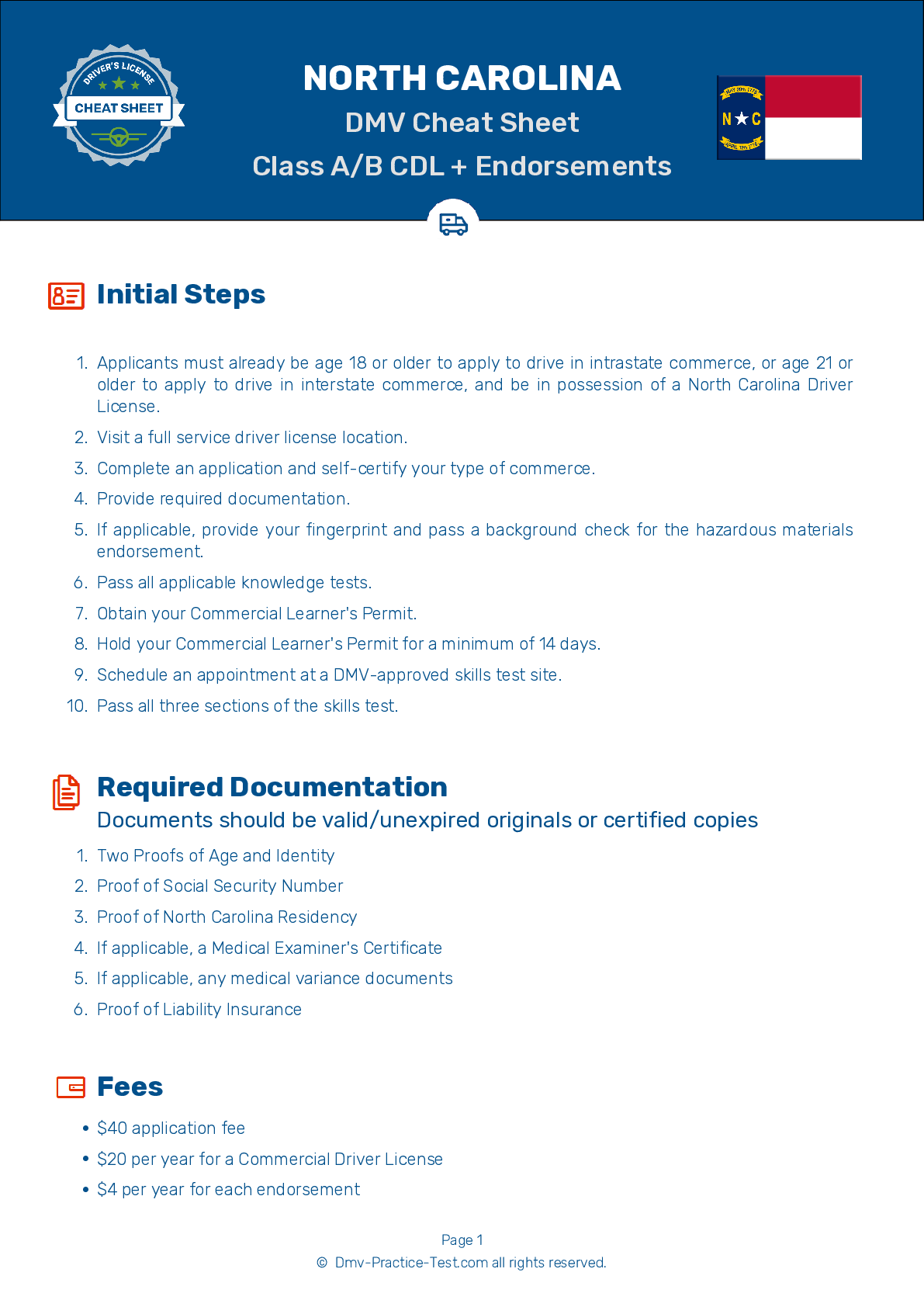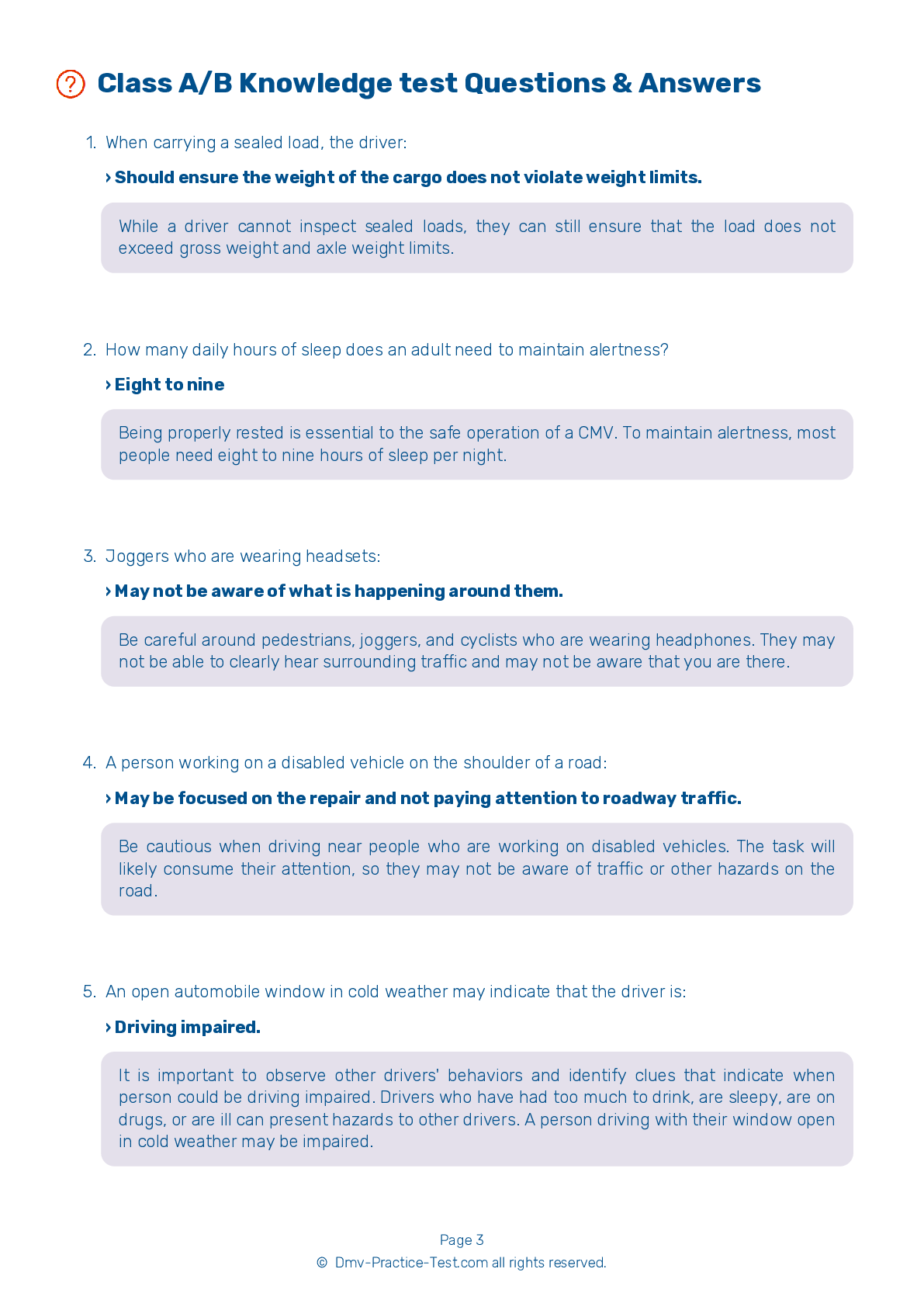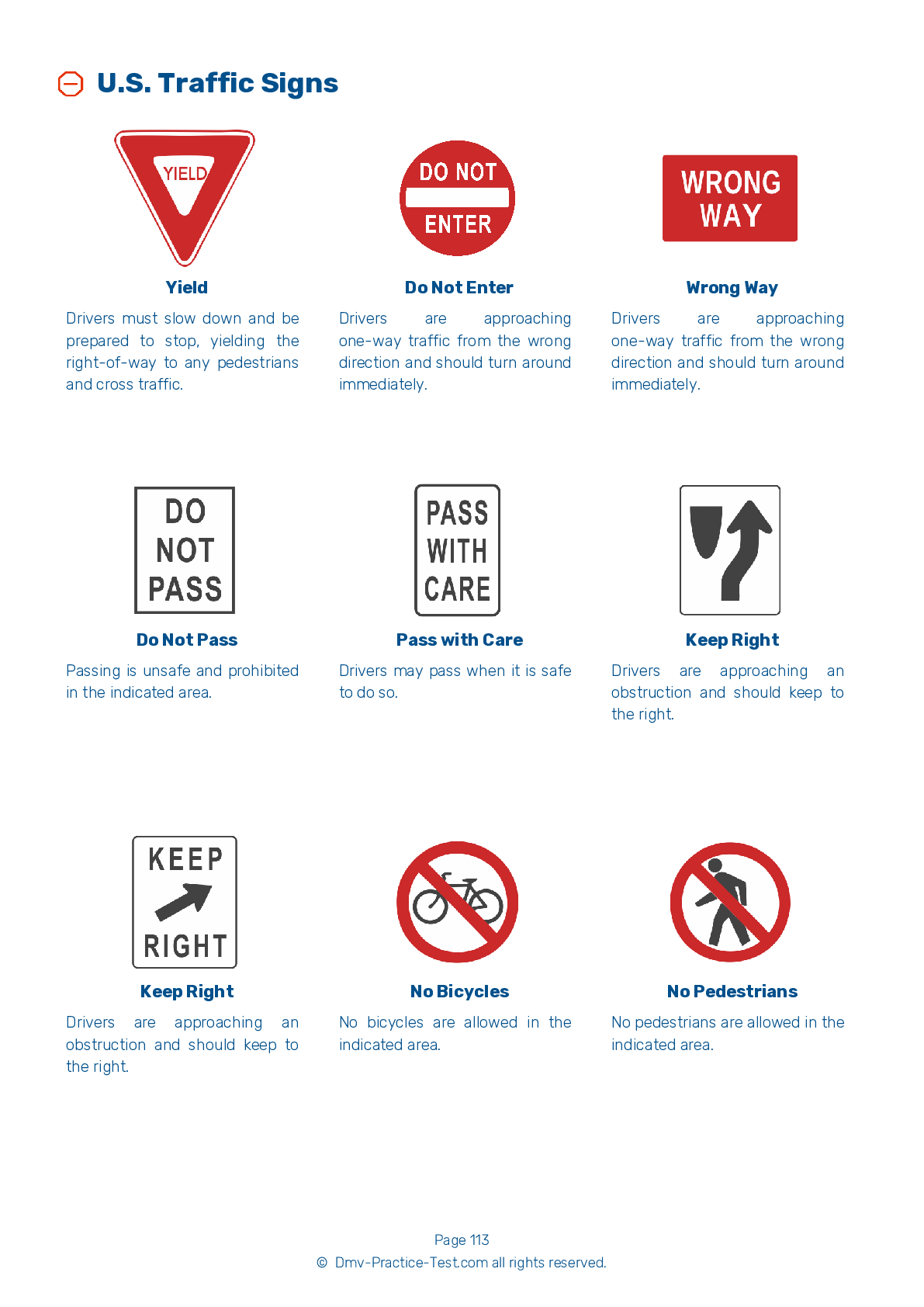Knowledge Test Class B #1
Class B Driving Test | North Carolina 2025 #1 Page 4 of 7
Train for FREE online with our North Carolina class B license test. The official exam test consists of several obligatory parts, with all of them checking your knowledge of different blocks of road rules. If you need to obtain a NC CDL class B permit in 2025, practice as much as possible. Free sample tests published on our website will help you check and improve your knowledge and boost your grades. Please bear in mind that CDL class B requirements may vary from state to state.
50
40
20
22 . A fatigued driver:
Is usually more conscientious than a typical driver.
If you are fatigued, you will not see or react to hazards as quickly as you would if you were fully energized and awake. You will be impaired in making critical decisions.
23 . An open automobile window in cold weather may indicate that the driver is:
Enjoying the fresh air.
It is important to observe other drivers' behaviors and identify clues that indicate when person could be driving impaired. Drivers who have had too much to drink, are sleepy, are on drugs, or are ill can present hazards to other drivers. A person driving with their window open in cold weather may be impaired.
24 . When completing an offset back/left parking maneuver, a driver should:
If you are asked to complete an offset back/left parking maneuver, you should first pull straight forward, then back up to the left. Your vehicle must be parked completely within the boundaries of the parking space.
25 . If a truck is equipped, a trailer brake hand valve can be used to:
Load cargo.
If a tractor-trailer is so equipped, the trailer brake hand valve can be used to stop the vehicle from rolling back when being started from a stop.
26 . Bridges usually:
Have heaters to prevent them from freezing.
Bridges usually freeze before the rest of the road. You should be especially careful when crossing bridges if the temperature is near the freezing point.
27 . How should you check your hydraulic brakes?
Pump the brakes three times, then apply firm pressure to the brake pedal for five seconds. The brake pedal should be easy to push to the floor.
To test hydraulic brakes, you should pump the brake pedal three times, then apply firm pressure to the brake pedal and hold for five seconds. The pedal should not move. If it does, there may be a leak.
28 . When exiting your vehicle, you must maintain ____ with the vehicle at all times.
Two points of contact
When exiting your vehicle during the basic vehicle control skills test, you must face the vehicle and maintain three points of contact at all times. If your testing vehicle is a bus, you must maintain contact with the handrail. Exiting the vehicle incorrectly may result in automatic failure of the basic control skills test.
2025 North Carolina | Frequently Asked Questions
To acquire a CDL Hazmat endorsement in North Carolina, you need to first have a CDL license. Then, pass the Hazmat Knowledge Test at a DMV office. You also need to complete a federal security threat assessment, which includes fingerprinting and a background check. Lastly, pay the required fees. Keep in mind that requirements may vary slightly depending on specific circumstances.
To obtain a CDL Hazmat license in North Carolina, you must first possess a valid CDL. You must then pass a written Hazmat knowledge test and a TSA background check. You should also be able to read and speak English well enough to converse, understand traffic signs, respond to official inquiries, and make entries on reports and records.
When applying for a CDL Hazmat endorsement in North Carolina, you'll need your current CDL, proof of U.S. citizenship or permanent legal residency (like a passport or birth certificate), and social security card. You will also need to complete and pass a TSA background check and provide fingerprints. Lastly, you'll need to pass the Hazmat endorsement knowledge test.
Yes, there is a dedicated written test for obtaining the CDL Hazmat endorsement in North Carolina. This test assesses your knowledge of hazardous materials regulations, safety procedures, and emergency response techniques. You must pass this test in addition to the standard CDL written and skills tests to receive the Hazmat endorsement.
The written test for the CDL Hazmat endorsement covers a range of subjects. These include identifying hazardous materials, understanding shipping papers, using placards and labels, handling emergencies and incidents, loading and unloading hazardous materials, and safe driving practices. The test also covers federal and state regulations for transporting hazardous materials.
Yes, there are extra charges associated with acquiring a CDL Hazmat endorsement in North Carolina. In addition to the standard CDL fee, you'll need to pay for a TSA background check and fingerprinting services. The costs can vary, so it's best to check with your local DMV and TSA offices for the most accurate and up-to-date fees.
Yes, background checks are mandatory for the CDL Hazmat endorsement. The Transportation Security Administration (TSA) conducts a security threat assessment, which includes a criminal history records check and a review of specific databases to ensure the applicant doesn't pose a security threat. This process is essential to ensure the safety of hazardous material transportation.
Yes, specialized training is necessary for the CDL Hazmat endorsement in North Carolina. Applicants must pass a written test that covers hazardous materials regulations and safety procedures. In addition, they must undergo a TSA security threat assessment, which includes a background check and fingerprinting. The endorsement is not granted until all these requirements are met.
No, you cannot legally transport hazardous materials without a valid CDL Hazmat endorsement in North Carolina. The endorsement ensures that drivers understand the safety protocols and regulations for handling hazardous materials. Driving without the required endorsement can result in significant fines and penalties, including loss of your commercial driver's license.
Yes, you can add the CDL Hazmat endorsement to your current CDL license in North Carolina. You don't need to apply for a new license. However, you'll need to pass the Hazmat knowledge test, undergo a TSA background check, and pay the necessary fees to obtain the endorsement. Always check with your local DMV for the most accurate information.



